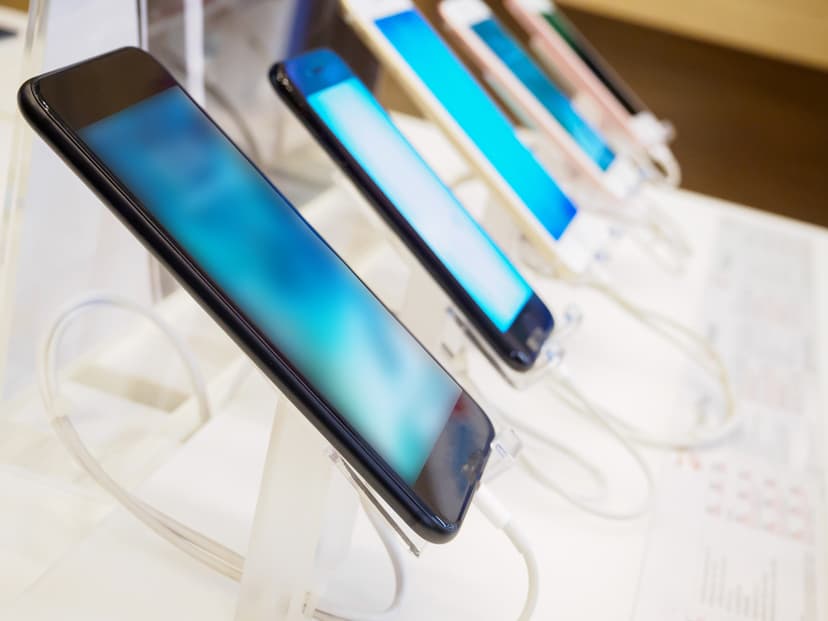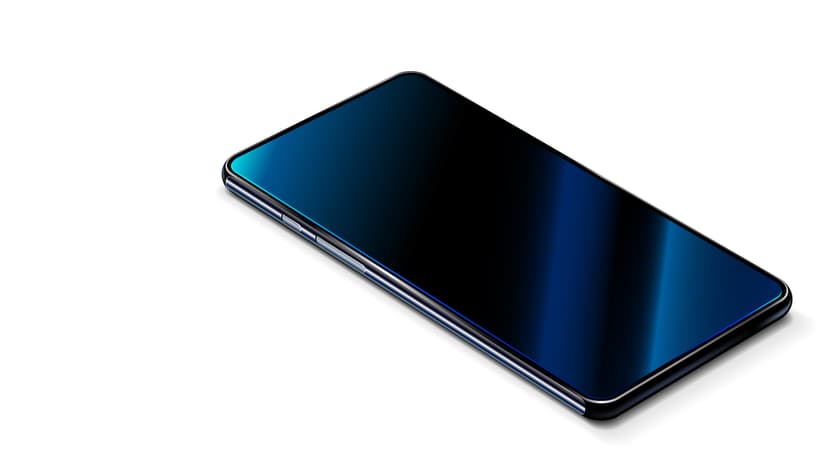The Complete Guide to Buying a New Cell Phone in 2024
Mason White • November 2, 2024 • 8 min
Deciding on a new cell phone can feel like a maze of features, prices, and models. Whether you're replacing a well-loved phone or buying your first smartphone, this guide will break down what you need to know.

From essential features to tips on finding discounts, let's explore everything that will make your next phone purchase a smart one.
Do You Need a New Phone? 4 Things to Consider
Before diving into specific models, it’s worth considering if you actually need a new phone. Upgrading is often tempting with each release, but new doesn’t always mean necessary. Here are four key considerations to help you decide:
-
Performance Issues: If your phone is slow, crashes frequently, or lags, it might be time for a replacement. Battery life is another indicator—if your phone no longer lasts through the day, and replacing the battery isn't an option, a new phone might be worth it.
-
Security Updates: Older devices may stop receiving software updates, leaving them vulnerable to security threats. If your phone no longer receives updates, upgrading can be essential for protecting personal data.
-
New Features: Phones now offer high-resolution cameras, 5G connectivity, and enhanced processing power. If these features would improve your experience, it could be time to upgrade.
-
Cost of Repairs vs. New Phone: Sometimes, fixing an old phone costs as much as buying a new one. When repair costs get high, it might make more sense to invest in a new model.
Assessing these factors can help you make an informed decision, ensuring you're investing in a phone that truly meets your needs.
Picking Your Phone Operating System
One of the first decisions when choosing a new phone is deciding on an operating system (OS). The two most popular options—Android and iOS—offer distinct advantages and experiences. Here’s what to know about each:
Android
Android is an open-source operating system with flexibility in customization and design. Most brands, including Samsung, Google, and OnePlus, use Android. Benefits of Android include:
- Wide Variety of Devices: Android offers a broad range of phones at different price points, from budget models to high-end devices.
- Customization: Users have more freedom to customize their phone layout, widgets, and even core functionality through third-party apps.
- Google Integration: For those using Google services, Android provides seamless access to Google Docs, Gmail, and other Google tools.
iOS
Apple’s iOS is exclusive to iPhones and is known for its user-friendly interface and seamless integration with other Apple products. iOS offers:
- Security: iOS is known for tight security protocols, keeping apps and data safe from unauthorized access.
- Easy Integration: If you own other Apple devices, iOS allows for easy transfer of data, and synchronization of apps, and access to Apple-exclusive features like FaceTime.
- User-Friendly Experience: iOS is often praised for its simplicity and smooth performance, appealing to users who prioritize ease of use.
Choosing between Android and iOS depends on your priorities. Both systems offer unique advantages that cater to different types of users.
Phone Features to Know About
Today’s phones come with a host of advanced features. Here are some essentials to consider to ensure your new phone aligns with your daily needs:
- Camera Quality: Many smartphones now feature cameras rivaling traditional digital cameras. Look at specs like megapixels, night mode, and zoom capabilities if photography is a priority.
- Battery Life: Battery life is crucial, especially if you’re on the go. Look for models with a minimum of 4000mAh for daily use without frequent recharging.
- Display Quality: Phones with OLED or AMOLED displays provide brighter colors and better contrast than standard LCD screens, improving media experience.
- Storage Capacity: Choose storage according to your usage needs. Many Android models allow for expandable storage, while iPhones are fixed. A minimum of 128GB is recommended for regular app, photo, and video storage.
- 5G Compatibility: With faster internet speeds and better connectivity, 5G-ready phones are worth considering for future-proofing your device.
- Water and Dust Resistance: Many phones are now rated for water and dust resistance. A rating of IP68 is ideal for protection from accidental spills and splashes.
Each feature serves a purpose, and choosing a phone with the right combination can significantly enhance your experience.
Most Reliable Phone Manufacturers: Our Shortlist
Selecting a reliable brand helps ensure your phone will last. Here are some manufacturers known for producing dependable devices:
- Apple: Known for long-lasting devices, Apple updates its software regularly and maintains strong security.
- Samsung: Samsung phones, especially in the Galaxy series, are known for their robust build, innovative features, and high-quality cameras.
- Google: With pure Android experience and regular updates, Google’s Pixel phones offer excellent software support and camera performance.
- OnePlus: This brand offers well-built devices with flagship-level specs at a lower cost, providing excellent value.
- Sony: Known for durable hardware, Sony’s Xperia models cater to media enthusiasts with great sound quality and display.
Each of these manufacturers has a reputation for reliability and offers options across various price ranges, so you’re bound to find a model that meets your needs.
Which Phones Are The Best for Seniors?
Phones tailored for seniors prioritize ease of use, accessibility, and durability. These models often include larger text, simple navigation, and hearing aid compatibility. Here are some popular choices:
- Jitterbug Smart3: Known for its senior-friendly design, Jitterbug offers large icons, simplified menus, and a dedicated emergency button.
- iPhone SE: Apple’s budget-friendly iPhone combines ease of use with accessibility features, including voice control and adjustable text sizes.
- Samsung Galaxy A13: This model has a large screen and offers Easy Mode, simplifying the interface and enlarging icons for better visibility.
- Nokia 3310 (4G): This classic-style phone with a modern twist provides simplicity, durable build, and essential functions without the complexity of a smartphone.
- Motorola Moto G Power: With excellent battery life and a straightforward Android interface, the Moto G Power is ideal for seniors who want basic functionality.
These models are designed with user-friendly features to make communication and daily use easier for seniors.

5 Things Seniors Should Consider When Buying a Phone
Seniors should focus on specific features when buying a new phone. Here are five key factors to keep in mind:
- Ease of Use: Look for phones with simplified menus, larger icons, and voice command options.
- Battery Life: A long-lasting battery means fewer charging sessions, making it easier for seniors to keep the phone ready for use.
- Hearing Aid Compatibility: For those with hearing aids, look for M and T ratings. A high rating means better sound quality when using a hearing aid.
- Durability: Phones with sturdy builds or cases can handle accidental drops better, which is helpful for seniors who may be less mobile.
- Emergency Features: Phones like the Jitterbug Smart3 include emergency call buttons, providing peace of mind for both seniors and their families.
Choosing a phone that addresses these needs can make a significant difference in usability and overall satisfaction.
How to Find Discounts on New Phones
Saving on a new phone is possible with the right approach. Here are some methods to get a deal on your purchase:
- Carrier Deals: Many carriers offer discounts or installment plans when you switch to their network or upgrade. Look for special offers, especially around holidays.
- Trade-In Programs: Major brands often have trade-in options that let you exchange an old phone for credit toward a new one.
- Student or Veteran Discounts: Check for discounts specific to students, military personnel, and other groups. Some brands offer direct discounts, while others partner with organizations to provide savings.
- Refurbished Phones: Buying a certified refurbished phone can save you significantly without compromising quality. Apple, Samsung, and other brands offer these directly on their websites.
- Online Marketplaces: Sites like eBay and Amazon often list new or lightly used models at reduced prices, although be sure to check seller reviews and return policies.
By researching these options, you can find a new phone without exceeding your budget.
Ordering a Cellphone Online: All You Need to Know
Ordering a phone online can save time and money, but it’s important to follow certain steps to ensure a smooth transaction:
- Verify the Seller: Only buy from reputable sources such as manufacturer websites, well-known carriers, or trusted e-commerce platforms like Amazon.
- Check the Return Policy: Make sure there’s a return window in case the phone doesn’t meet your expectations. Most major retailers offer a 30-day policy.
- Review Product Warranty: Manufacturer warranties protect against defects, so look for coverage details before purchasing.
- Read Reviews: Look at customer reviews for insights into the phone’s performance and durability.
- Consider Insurance: Some online retailers offer extended warranties or insurance plans to cover accidental damage.
Taking these precautions can ensure that your online purchase is safe, secure, and satisfactory.
5 Easy Ways to Save on A New Cell Phone Purchase
You don’t have to pay full price for a new phone. Here are five simple strategies to reduce costs:
- Wait for Sales: Big sales events like Black Friday, Cyber Monday, and back-to-school events often feature significant phone discounts.
- Consider Older Models: New releases often lower the prices of previous models, which are still high-quality devices with excellent functionality.
- Use Reward Points: Some credit card companies allow you to redeem points for purchases, including electronics like phones.
- Purchase with a Family Plan: Some carriers offer family plans that allow for lower per-line costs and discounts on new phones.
- Look for Bundles: Retailers sometimes offer bundles where you receive accessories, such as cases and chargers, at a discount when buying a phone.
These approaches can help you secure a high-quality phone without going over budget.
Conclusion
Buying a new cell phone is a major decision that involves balancing your preferences, budget, and long-term needs. With options tailored to seniors, extensive features, and ways to save, there's a phone out there that meets every need. By following this guide, you’ll be well-prepared to choose a phone that aligns with your lifestyle and budget.
Disclaimer
This article provides general information for understanding options in cell phone purchases. We do not endorse specific models or brands, and readers should consult experts or manufacturers for personalized recommendations. Prices and features may vary by region, and purchasing decisions should be based on individual research.